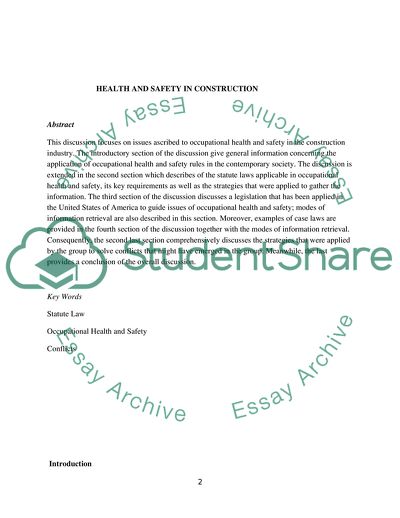Cite this document
(The Health and Safety in Construction Coursework Example | Topics and Well Written Essays - 2000 words - 3, n.d.)
The Health and Safety in Construction Coursework Example | Topics and Well Written Essays - 2000 words - 3. https://studentshare.org/engineering-and-construction/1789995-health-and-safety-in-construction
The Health and Safety in Construction Coursework Example | Topics and Well Written Essays - 2000 words - 3. https://studentshare.org/engineering-and-construction/1789995-health-and-safety-in-construction
(The Health and Safety in Construction Coursework Example | Topics and Well Written Essays - 2000 Words - 3)
The Health and Safety in Construction Coursework Example | Topics and Well Written Essays - 2000 Words - 3. https://studentshare.org/engineering-and-construction/1789995-health-and-safety-in-construction.
The Health and Safety in Construction Coursework Example | Topics and Well Written Essays - 2000 Words - 3. https://studentshare.org/engineering-and-construction/1789995-health-and-safety-in-construction.
“The Health and Safety in Construction Coursework Example | Topics and Well Written Essays - 2000 Words - 3”. https://studentshare.org/engineering-and-construction/1789995-health-and-safety-in-construction.


